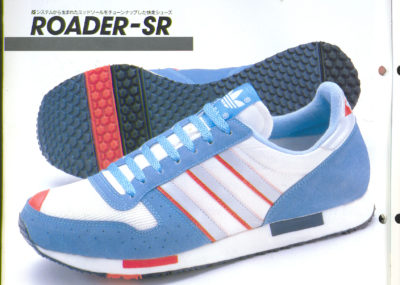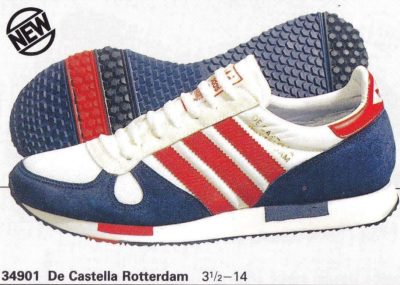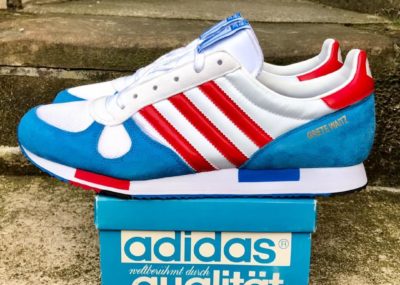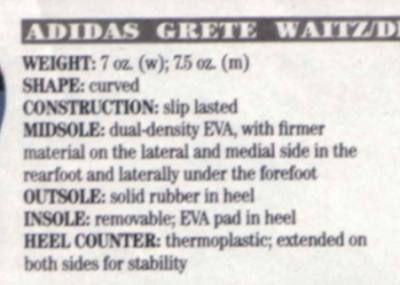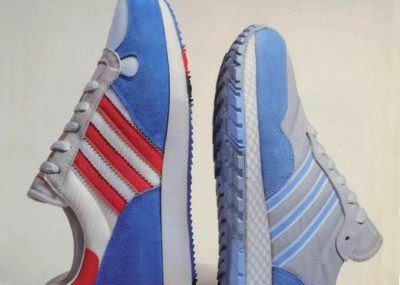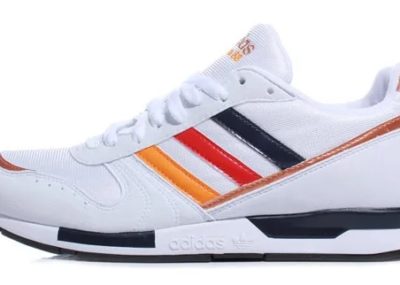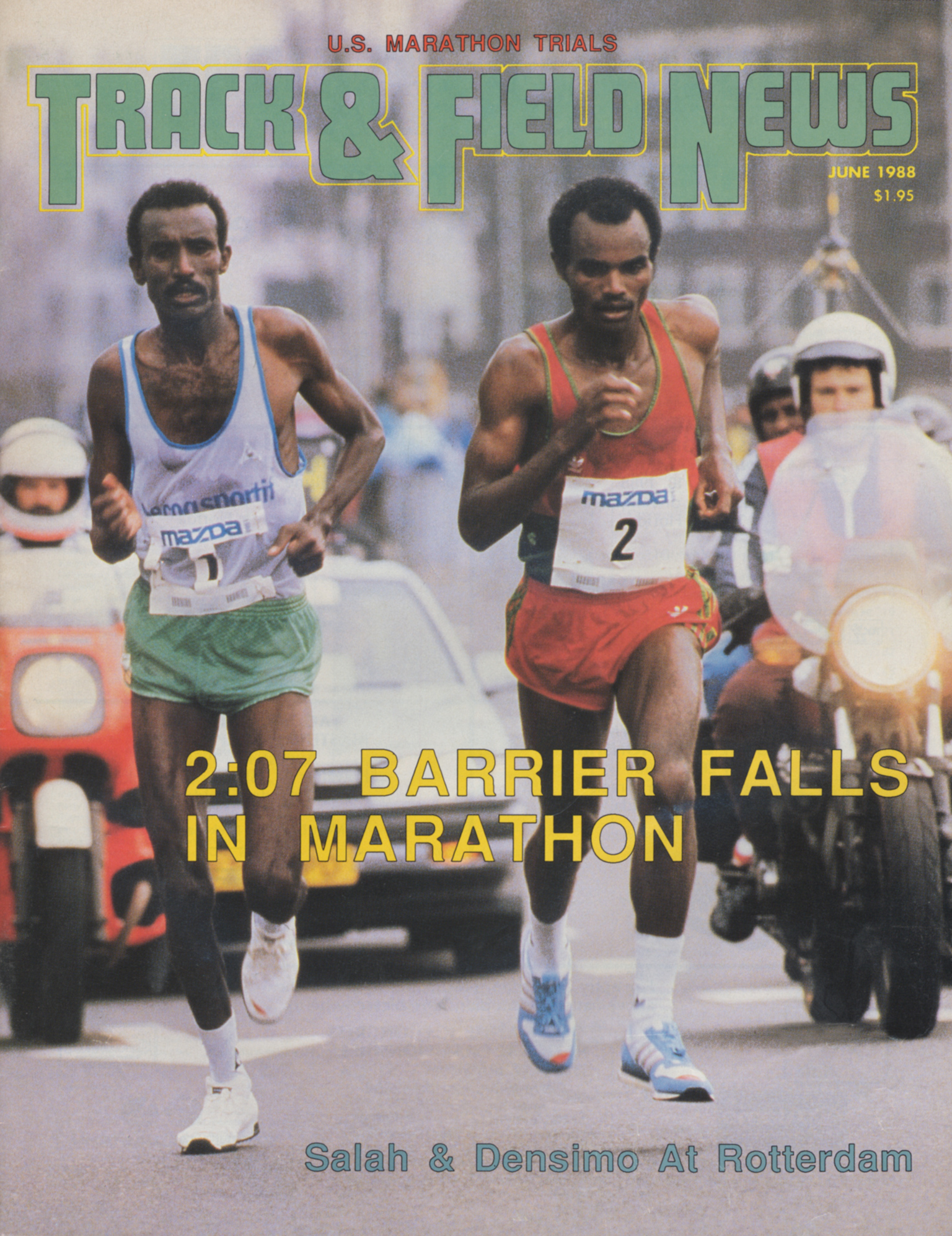
17-Apr-1988 – Rotterdam Marathon – 2:06:50 – Adidas Roader-SR
Date of birth: 28-Jun-1965
Nationality: Ethiopian
World Record Duration: 10 years, 5 months, 3 days
The athlete:
Belayneh Densamo is one of the more remarkable athletes in this list. He made his international debut at the 1986 Tokyo Marathon, coming second with the time of 2:08:29, one of the fastest marathon performances in the world. His year would finish at the Goodwill Games in Moscow, where he would secure his first marathon victory.
Starting the 1988 Rotterdam Marathon, Densamo was the defending champion. He had promised that he would break 2:07, and the pressure was on for him to deliver. His wife was heavily pregnant at the time, and it was only in the last month did she insist that her husband dedicate himself fully to his training. Densamo was not the only one promising heroics for the race, as competitor Ahmed Salah agreed with organisers to give him US$50,000 if he broke the world record.
The race would become a duel between the two men, Salah leading at the 35 kilometre mark while Densamo followed just behind. It was only in the last two kilometres that he edged ahead. He knew he was on world record pace based on the clock on the pace vehicle. He made one last push, saying later that he did not care if he had died in the process of breaking the record. Densamo felt nauseous for several minutes after the finish, before erupting with joy at setting the new world record. His pace was remarkably consistent, each five kilometre split somewhere between 15 minutes to 15 minutes and 9 seconds. The benchmark he set would quite incredibly remain unbeaten until 1998. Salah finished in 2:07:07, which stood as second fastest in the all-time list until 1995.
While Densamo would go on to win many more major marathons, he never translated his success into Olympics gold. In 1988, Ethiopia decided to boycott the Olympics, with Densamo helpless but to comply. He did however have a memorable turn at the 1988 Fukuoka Marathon, where he finished second after accidentally following the pace vehicle off the course, sprinting back to almost regain the lead. In 1992, his situation became far more perilous. Densamo had to move his family to the United States of America after his house was blown up following ransom demands.
His first and last attempt at Olympic glory came in 1996. Starting strongly, he would lead the race at the halfway point. Unfortunately the hot and humid conditions took their toll and he faded soon after before failing to finish.
It was fitting that his last major victory came earlier that year at the 1996 Rotterdam Marathon, his fourth win at the event, proving that he had lost none of the speed with which he set the world record.
The shoes:
Determining what Densamo wore that day in 1988 proved to be quite the mystery. Even with another clear shot of the shoes from his win at the 1989 Rotterdam Marathon, they defied identification. It was far easier to identify the white shoes worn by his competitor Salah, the Le Coq Sportif Race an unusual choice given the dominance of Adidas and Nike. They were recently released in almost identical form as the Race 88, and are still available new from various sources.
It was Neil Selvey, author of one of the best books on Adidas ever published (link here), who solved it. He was able to provide the attached catalogue picture from 1987, that reveals that the shoes were the Roader-SR. To give some background, Adidas had licensing agreements around the world to make its shoes. In the Japanese market, this led to the creation of several models for domestic consumption. The Roader-SR was one such shoe, produced from 1987 until around 1991, changing to a colourway reminiscent of the EQT series of shoes Adidas released that same year. Densamo would continue to race in the Roader-SR until at least the 1991 Rotterdam Marathon, having temporarily switched to the Marathon 88 model for the 1990 season.
The midsole was first introduced in 1985, on the Grete Waitz and De Castella Rotterdam models. Interestingly, Waitz never competed in the marathon distance in her version, while De Castella only used it once for the 1985 Chicago Marathon. In any case, the midsole uses different densities of EVA foam to give greater stability. The outsole was designed for durability, accompanied by thicker mesh on the toebox with overlays to give the upper longevity as well. Apart from the colourway, the only actual difference between the upper of the Roader-SR and the Grete Waitz/De Castella Rotterdam are the overlays around the toebox.
The overall result is as practical as it is handsome. While I’m trying to confirm this, it is likely that Densamo was given the shoes during one of his early visits to Japan. Although arguably one of the most significant shoes on the list for Adidas, the Roader-SR has never been rereleased. Until I was given this wonderfully clear catalogue shot, I had been unable to find any pictures of the shoes other than on Densamo’s feet. Since then I’ve found another photo of a used pair from a second-hand shop, proof that there may be pairs out there if you look hard enough.
Adidas have released the Grete Waitz model in various colourways since its debut in 1985. First there were the releases in 2006, which included the original colourway, and then again in 2015 in either distinctive pink snakeskin or more subtle navy. Maybe Adidas could also consider bringing the Roader-SR back, as despite their place in running history they remains stuck within the history books.
References:
https://en.wikipedia.org/wiki/Belayneh_Dinsamo
https://www.ad.nl/andere-sporten/niemand-wist-waar-belayneh-densamo-was~a06d64cd/
https://ethiopianbusinessreview.net/belayneh-densamo/
https://www.latimes.com/archives/la-xpm-1989-11-05-sp-1650-story.html
https://twitter.com/3_stripes4life/status/1053956988676304896
https://www.instagram.com/p/Bpw9pkKh3Ot/
https://mobile.twitter.com/deadstockutopia/status/1029091359913926657
https://trackandfieldnews.com/a-history-of-track-field-news-covers/
Ide Adol via Facebook
